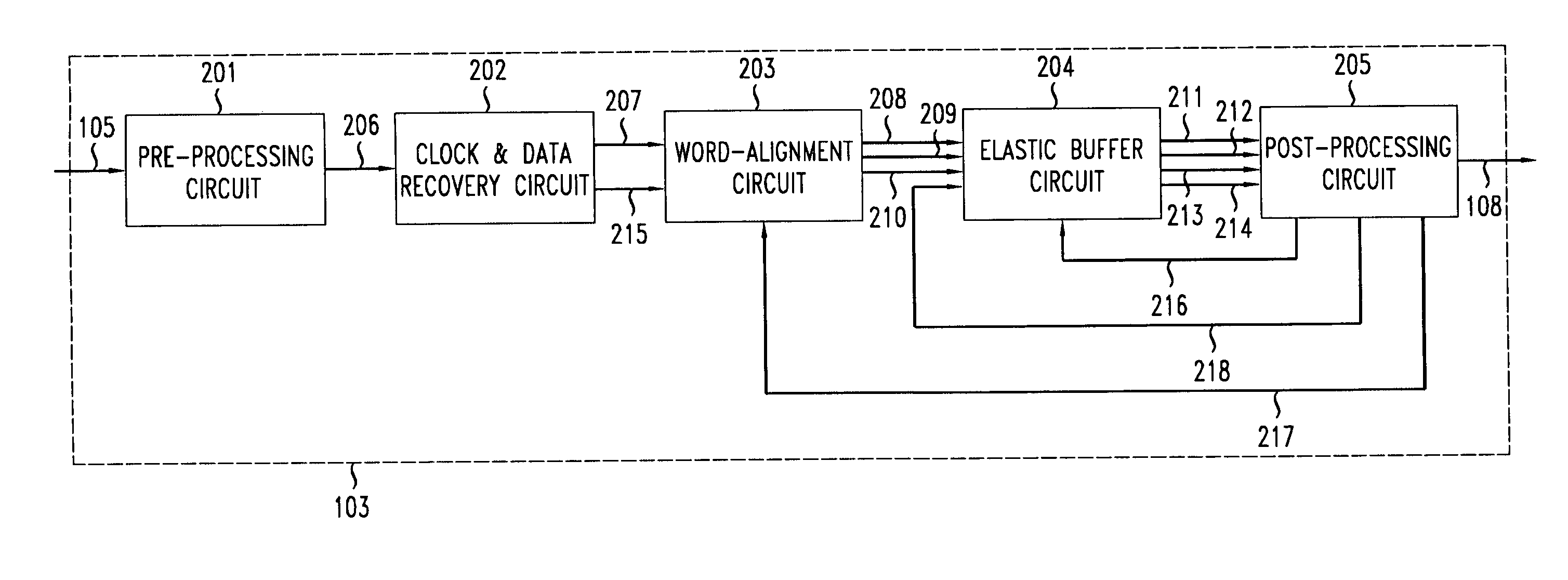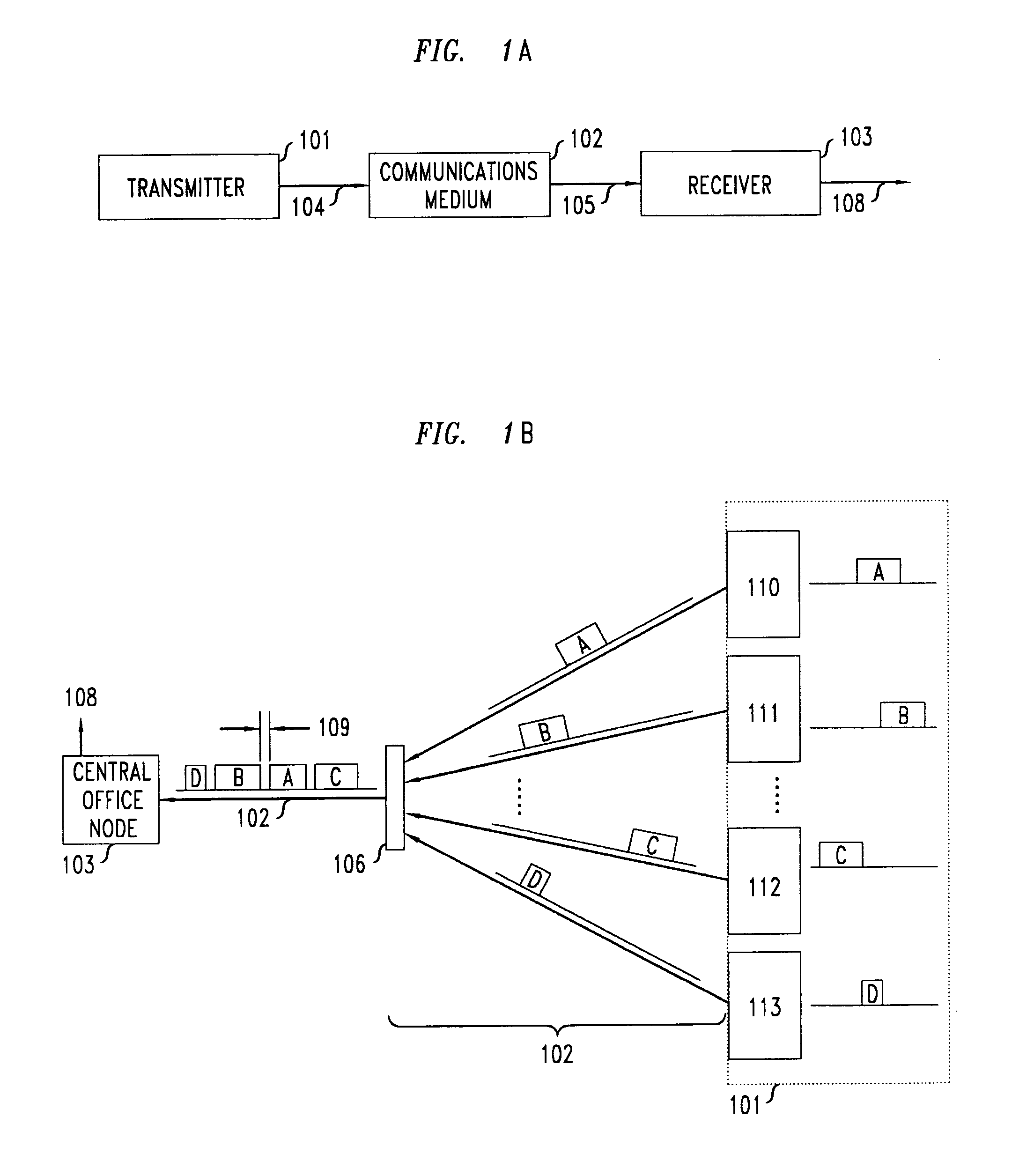Clock, data and time recovery using bit-resolved timing registers
- Summary
- Abstract
- Description
- Claims
- Application Information
AI Technical Summary
Benefits of technology
Problems solved by technology
Method used
Image
Examples
Embodiment Construction
[0018]FIG. 1A shows an illustrative communications network having a transmitter 101, a communication medium 102, and a receiver 103, connected as shown in the FIG. 1. Data 104 are outputted by the transmitter 101 into the communication medium 102 and is carried by medium 102 to receiver 103 as input data stream 105. The receiver 103 decodes input data stream 105 to produce output 108, which comprises an output data word stream supplemented with timing information.
[0019]FIG. 1B shows more specific illustrative communications network, namely a time-division multiple access (TDMA) passive optical communication network (PON) having multiple user transmitter nodes 110–113, within a group of transmitters 101, transmitting and receiving data from a central office node 103. While a TDMA PON is one representative example, one skilled in the art will recognize that the principles of the present invention may be applied to any network with one or more transmitter nodes that requires accurate t...
PUM
 Login to View More
Login to View More Abstract
Description
Claims
Application Information
 Login to View More
Login to View More - R&D
- Intellectual Property
- Life Sciences
- Materials
- Tech Scout
- Unparalleled Data Quality
- Higher Quality Content
- 60% Fewer Hallucinations
Browse by: Latest US Patents, China's latest patents, Technical Efficacy Thesaurus, Application Domain, Technology Topic, Popular Technical Reports.
© 2025 PatSnap. All rights reserved.Legal|Privacy policy|Modern Slavery Act Transparency Statement|Sitemap|About US| Contact US: help@patsnap.com



